Are you scheduled to be on your period during an upcoming kayaking trip?
Or, are you wanting to go right now but not sure if it’s okay?
The thought of having to miss out on a fun-filled day out on the water might fill you with dread, but there is no need to be concerned.
You can absolutely go kayaking while you are on your period.
This time of the month might come with a few inconveniences, but they are all easily managed when you know how to prepare for them while kayaking.
- Can You Kayak On Your Heaviest Days?
- Can Training for Kayaking Competitions Affect My Menstrual Cycle?
- Does It Matter Which Type of Kayak You Use?
- Can Sharks Tell If You Are On Your Period?
- Is It Possible to Delay Your Period Before a Big Trip?
- What If You Have Painful Cramps?
- How Do You Manage Other Period Symptoms?
- Which Feminine Hygiene Products Work Best for Kayaking?
- What Should You Wear While Kayaking On Your Period?
- What Else Should I Add to My Hygiene Kit?
- What If You Experience a Leak?
- How Can You Discreetly Tend to Your Needs Outdoors?
- How Do You Dispose of Used Hygiene Products?
- Conclusion
- You Might Also Like…
Can You Kayak On Your Heaviest Days?
The typical menstrual cycle involves changes in the heaviness of the flow from day to day.
Most women find that their period is the heaviest during the first several days, and then it tends to wane off until it stops.
The pattern can change from one month to another, but most women find that it stays relatively the same.
You can use a chart to figure out which days might be more comfortable for you to go kayaking if you have control over the dates for the trip.
While you can go with a heavy flow, it is easier to kayak if you don’t have to make so many personal hygiene stops.
It should also be noted that some women suffer from menorrhagia, or excessive menstrual bleeding. Feeling as though your period is too heavy for you to go kayaking could be a sign that you need to talk to a doctor.
As a general rule, your period shouldn’t be so heavy that it interferes with your normal activities.
If you do have excessively heavy periods, then your doctor can help you find a treatment that allows you to kayak without any problems.
Can Training for Kayaking Competitions Affect My Menstrual Cycle?
On the other side of the equation, there are women who may worry about what kayaking can do to their menstrual cycle. Serious changes in your workouts can alter your menstrual cycle.
It is not normal for kayaking to interfere with your period. If you notice that you skip a period after you’ve started a new training regimen, then this is also worth getting checked out.
Absent or lighter than normal periods might mean that you are pushing your body too far or not eating well during your training.
Small adjustments to your fitness regimen can restore your cycle to normal and allow you to work towards winning those kayaking competitions.
Does It Matter Which Type of Kayak You Use?
There’s no skirting around the fact that kayaking is a wet sport. This could pose a problem depending upon the type of feminine hygiene product that you prefer.
If you plan to wear pads, then having your lower body getting soaked might interfere with their ability to stay absorbent.
Sit-on-top kayaks are known for providing a wetter experience compared to sit-in styles.
If you plan to wear pads, then a sit-in kayak with a snug spray skirt could help you have an easier time staying dry.
Can Sharks Tell If You Are On Your Period?
Kayaking on the ocean is an amazing experience that gives you the opportunity to see wildlife that includes orcas, sea lions and the possible shark.
Sharks have a powerful sense of smell that is designed to help them detect the scent of prey in the water. A Great White Shark can detect a single drop of blood in the water, which might seem scary if you are on your period.
Fortunately, sharks seem to be uninterested in attacking women who are menstruating.
If you do experience a leak that makes it into the water, sharks are more interested in detecting components in blood that signify that marine animals are present in the area.
Always pay attention to shark warnings on beaches where you plan to kayak, but you don’t have to avoid kayaking in the ocean just because you are on your period.
It is also comforting to know that other types of wildlife, such as bears, are not interested in menstrual blood if you plan to kayak near wooded areas.
Is It Possible to Delay Your Period Before a Big Trip?
Certain forms of birth control have the added benefit of helping you to control your period. Some women find that using hormonal birth control helps to lighten their periods and shorten the duration of the flow.
In some cases, you can also use your birth control to delay your period. This method typically involves continuing to take your active birth control pills instead of the place holder pills during the designated week.
This is naturally an option that you should only use under the guidance of your physician.
Since doing this for the first time can still lead to some withdrawal bleeding, your doctor can help you decide if doing it for an extended period might be more beneficial.
Extended-use birth control is frequently used by people in physically demanding careers such as the military.
Professional athletes might also choose this option to prep for a lengthy kayaking expedition.
What If You Have Painful Cramps?
There is of course the additional issue of how you might feel during your period.
Cramps are often a concern for anyone who might have to swim for self-rescue purposes.
Plus, the idea of using your abdominal muscles to paddle might not sound so great when you are already in pain.
The good news is that the movements you use for paddling can help loosen up tightened muscles in your abdomen that contribute to cramps.
Aerobic exercise is known for increasing blood flow to your uterus that alleviates that cramping sensation, and physical activity in general releases endorphins in your brain that block pain receptors.
If you do find that cramps are ruining your fun, then you can take your preferred over-the-counter pain reliever to help.
Heating pads are another option that can be worn beneath your swimsuit to help relax tense muscles.
These have the additional benefit of helping you to stay warm if you plan to kayak in cold conditions.
Menstrual cramps should not affect your ability to swim safely to shore if you experience a capsize and cannot get back into your boat.
How Do You Manage Other Period Symptoms?
Headaches, fatigue and other period symptoms might occur on your kayaking trip.
Many of these can be avoided using the same techniques that you should always use to prepare for an adventure.
Try to get plenty of sleep the night before you head out.
Then, eat a light breakfast that includes a carbohydrate and protein. This helps you avoid headaches that occur with low blood sugar and exhaustion.
During your kayaking trip, make sure to stay hydrated and use sun protection to further prevent additional symptoms.
Which Feminine Hygiene Products Work Best for Kayaking?
The majority of women have some type of preferred feminine hygiene product. In some cases, you might need to explore a different type to achieve full protection from leaks or discomfort while you kayak.
Pads
Sanitary pads are often the go-to choice for women who cannot wear other forms of protection for various reasons.
A pad is effective during kayaking, but it comes with the potential issue of getting wet if you fall out of your boat or are likely to get splashed given the water conditions.
This can be combated by wearing waterproof clothing or altering your kayaking style for this trip.
Tampons
Tampons have the obvious benefit of being safe to wear whether you are swimming or paddling through white rapids.
They also come in several absorbencies along with compact styles that might be easier to fit in your gear bag.
Tampons shouldn’t be worn for more than eight hours, which shouldn’t be too big of a problem since you’ll probably need a bathroom break before then.
Menstrual cup
These flexible cups are designed to catch and hold menstrual blood until the product is removed for cleaning.
Most people find that they have to empty their cup less often than they have to change their tampon, which could be a benefit if you like long kayaking trips.
A menstrual cup does require a bit of a learning curve to get comfortable with using, so plan to practice with it before you are stuck far from home.
Period-proof underwear
These function like an all-in-one pad and underwear set.
The advantage to period-proof underwear is that you get to avoid the potential hazard of having an adhesive pad lose its sticking power in the water.
They are also eco-friendly since they are reusable. Like disposable pads, these are not waterproof.
You may also need to plan to carry soiled underwear home if you need to change to a new pair on your trip.
What Should You Wear While Kayaking On Your Period?
The best clothing to wear while kayaking is anything that protects you from the elements and supports the effectiveness of your chosen feminine hygiene products.
Kayaking in warm conditions might require nothing more than your typical swimsuit or light pants and shirt.
In this case, you might choose darker clothing that can disguise leaks. Waterproof pants or shorts can serve as an additional layer of protection if you choose to wear a pad or period-proof underwear.
Cold weather kayaking gives you other options for clothing that can help during your period.
A wet suit does not keep you completely dry, which means that you might want to choose tampons or a menstrual cup for period protection during your trip.
A dry suit can successfully keep pads and underwear in good condition as you kayak, but it is important to remember that these are not always fail proof.
What Else Should I Add to My Hygiene Kit?
By now, you hopefully have an idea of what you can use to control your period while you kayak. Now, it is time to add some additional items to your hygiene kit.
First, you’ll want to stash your supplies into a dry bag. This protects it from getting wet if it drops into the water or you have to do a roll.
Personal hygiene wipes are another essential that you will want to have for times when you need to change or clean your period protection.
These can double as hand wipes, or you can bring along a small bottle of hand sanitizer or soap to clean up after a bathroom break.
If you use soap, be cautious about allowing it to get into open water. Even biodegradable soap can have a negative impact on natural bodies of water.
An extra swimsuit or pair of underwear is helpful to have on hand if you have enough room in your gear bag.
What If You Experience a Leak?
Period leaks happen, even in the best of circumstances. Your flow might increase due to your increased physical activity, or it could slow down.
Until you go kayaking on your period, you can’t be 100% sure how your body will react.
You can’t control what your body does, but you can be prepared. If you are wearing dark clothing, then you can hop in the water to clean up.
If you’ve made it to shore, then you can do a clothing change and rinse your soiled clothes in the water.
Then, you can hang them to dry if you plan to wear them later or store them to take home for cleaning.
Keeping anything you don’t need to wear again damp in a wet bag can prevent stains until you can launder them properly.
How Can You Discreetly Tend to Your Needs Outdoors?
Taking a bathroom break can feel a little awkward if you are stuck outdoors with few places to hide.
Try to stop for a bathroom break at the closest facility to your launch site. For a short trip with no leaks, this might be all you need to make it through the adventure.
Most kayaking locations also have places along the shore where you might be able to dive behind a tree for privacy.
If you plan to kayak in a remote location, then you’ll want to be extra careful about packing enough hygiene supplies.
In a pinch, you can use a towel as a makeshift screen. An oversized opaque poncho can also create a wearable privacy screen that you can use to cover yourself as you handle any hygiene needs beneath it.
How Do You Dispose of Used Hygiene Products?
Disposable hygiene products should never be tossed in the water or buried in the ground.
Many products take a long time to biodegrade and biological fluids could disrupt delicate ecosystems.
You’ll need to pack out all solid waste products, but there are some easy ways to do this.
Menstrual cups are often used for environmental reasons among outdoor enthusiasts.
If you need to empty a cup, then dig a cat hole that you can use to pour the contents into.
The hole should be at least 200 feet away from water, especially if you plan to use soap to clean the cup or your hands.
Wet bags are useful for holding any products that you want to reuse. Cloth pads, period underwear and soiled clothing can all go into a wet bag that you can wash with everything else.
A disposable wet bag can be made by using a plastic bag. Wrapping the clear bag with duct tape is an option that many kayakers use to add an extra layer of discretion.
Empty water bottles are an option that you can use to carry used tampons until you get home.
Similar to plastic bags, most people wrap them with colorful tape or label them to make it clear that they do not hold water.
Conclusion
Having a period shouldn’t stop you from enjoying yourself.
In fact, paddling your kayak puts you in touch with nature and serves as a distraction from any menstrual symptoms that you face.
Getting ready to go kayaking on your period only requires adding a few simple supplies to your gear bag and thinking carefully about what you want to wear.
Once you are set up, you can paddle with confidence that you are prepared to have an awesome adventure.
You Might Also Like…
-

Kayaking Vs. Rowing: What’s the Difference? (8 Key Differences)
-
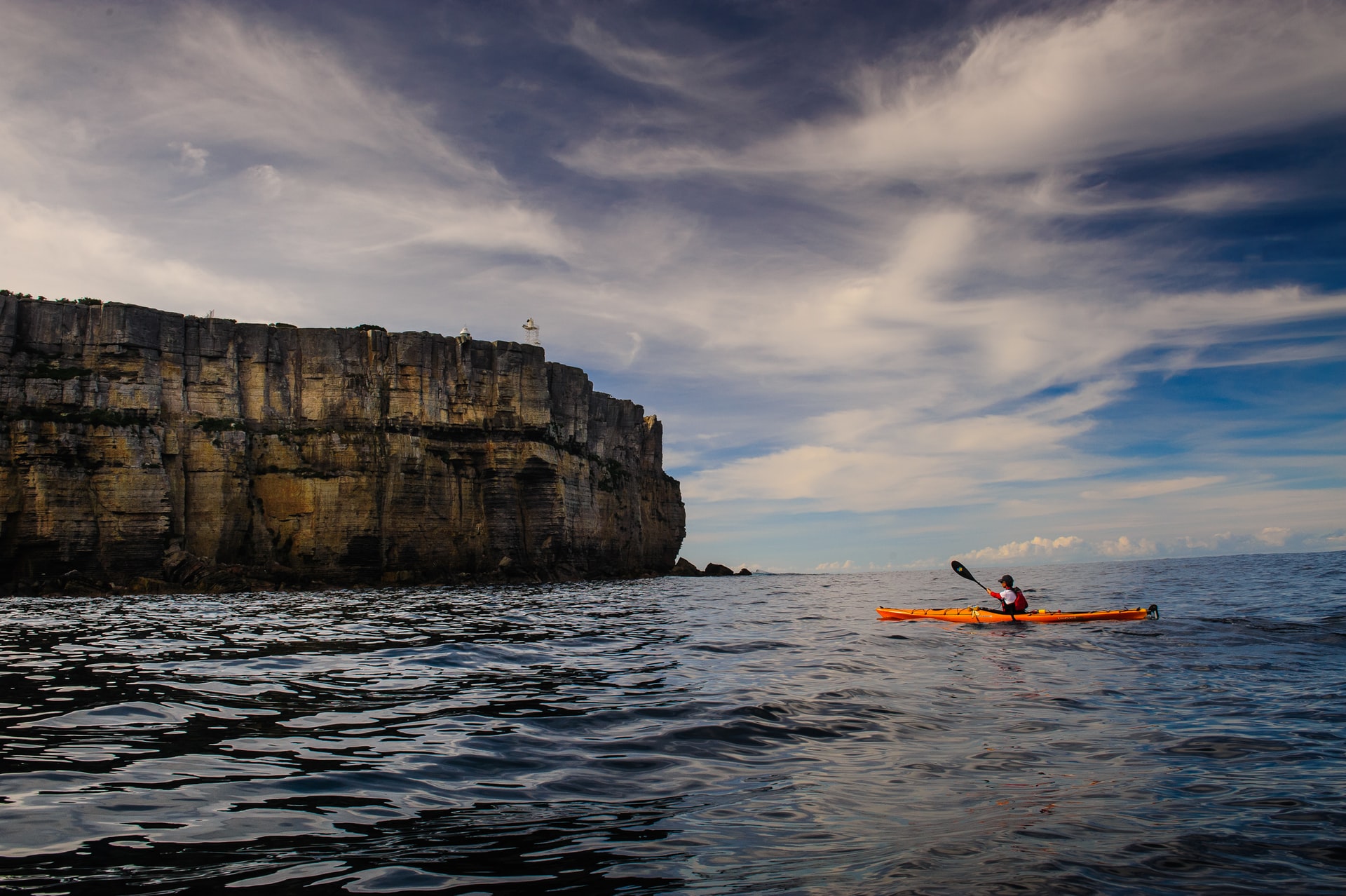
When Is It Too Windy for Kayaking? (Crucial Facts You Should Know)
-

When to Go Kayaking? (What Every Kayaker Should Know)
-

Will I Get Wet Kayaking? (Common Reasons & How to Stay Dry)
-
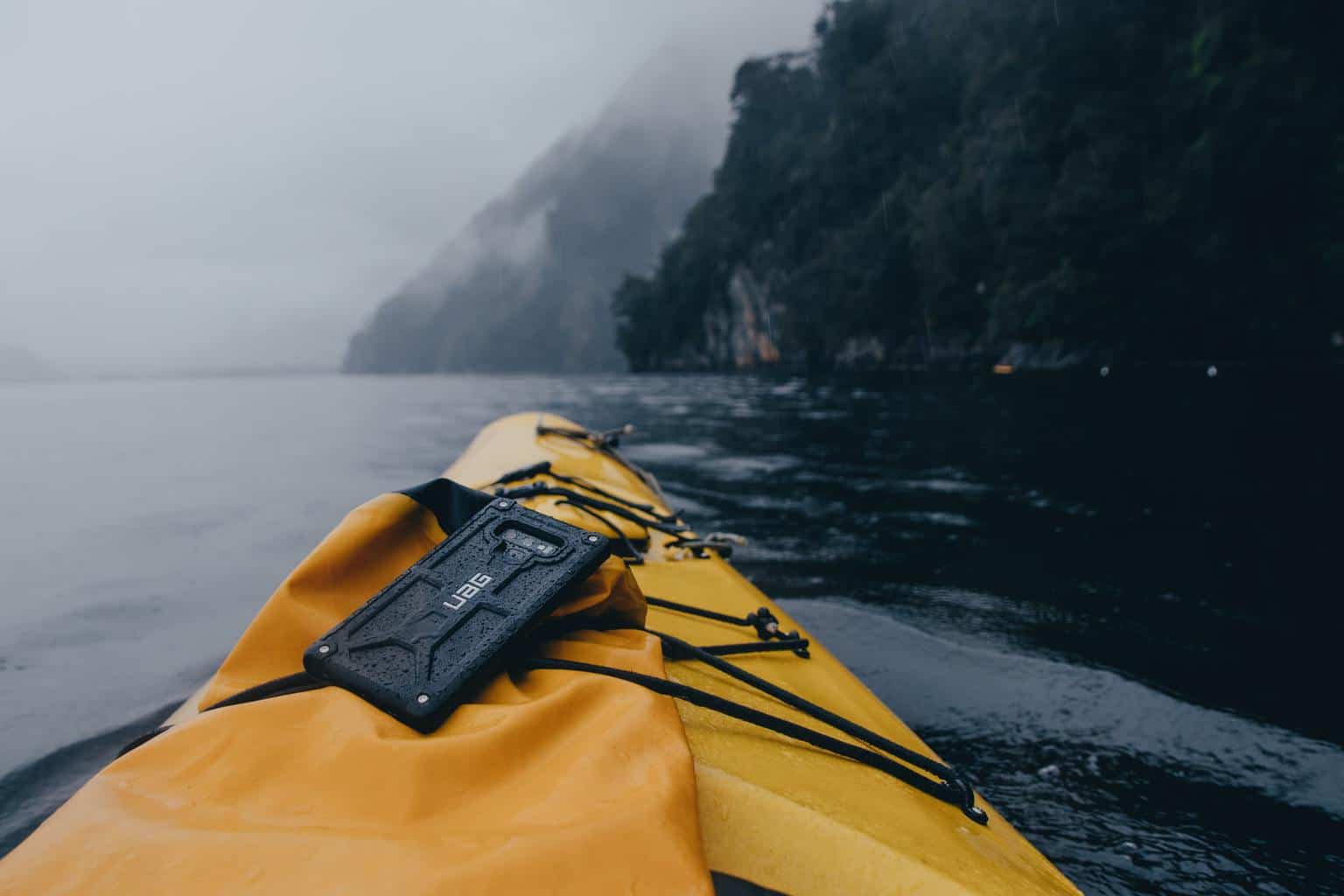
Should I Bring My Phone Kayaking? (7 Good Reasons)
-

What Shoes to Wear Kayaking? (+ the Best Shoes for Your Needs)
-
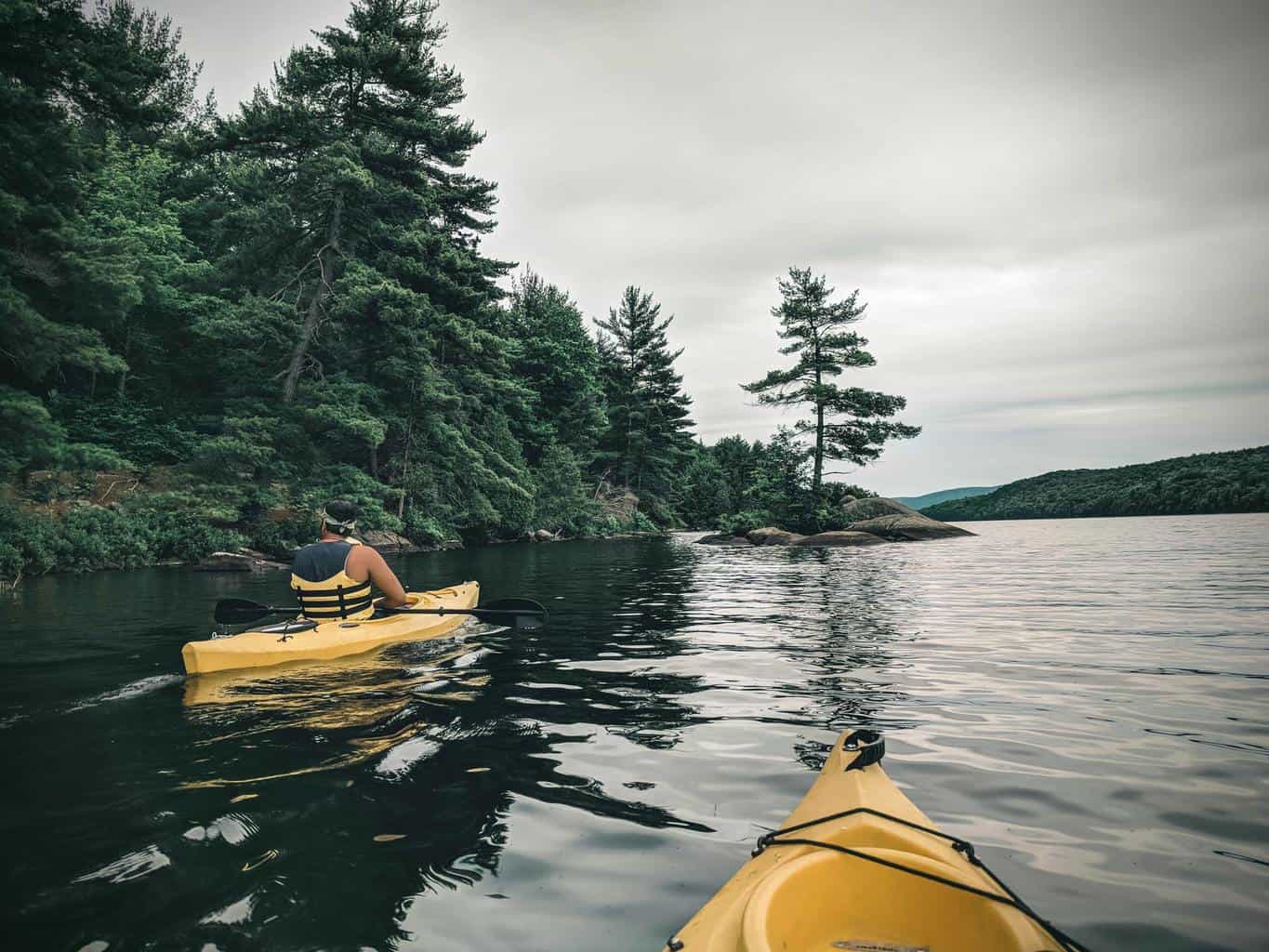
Can Kayaking Cause Chest Pain? (What Every Kayaker Should Know)
-
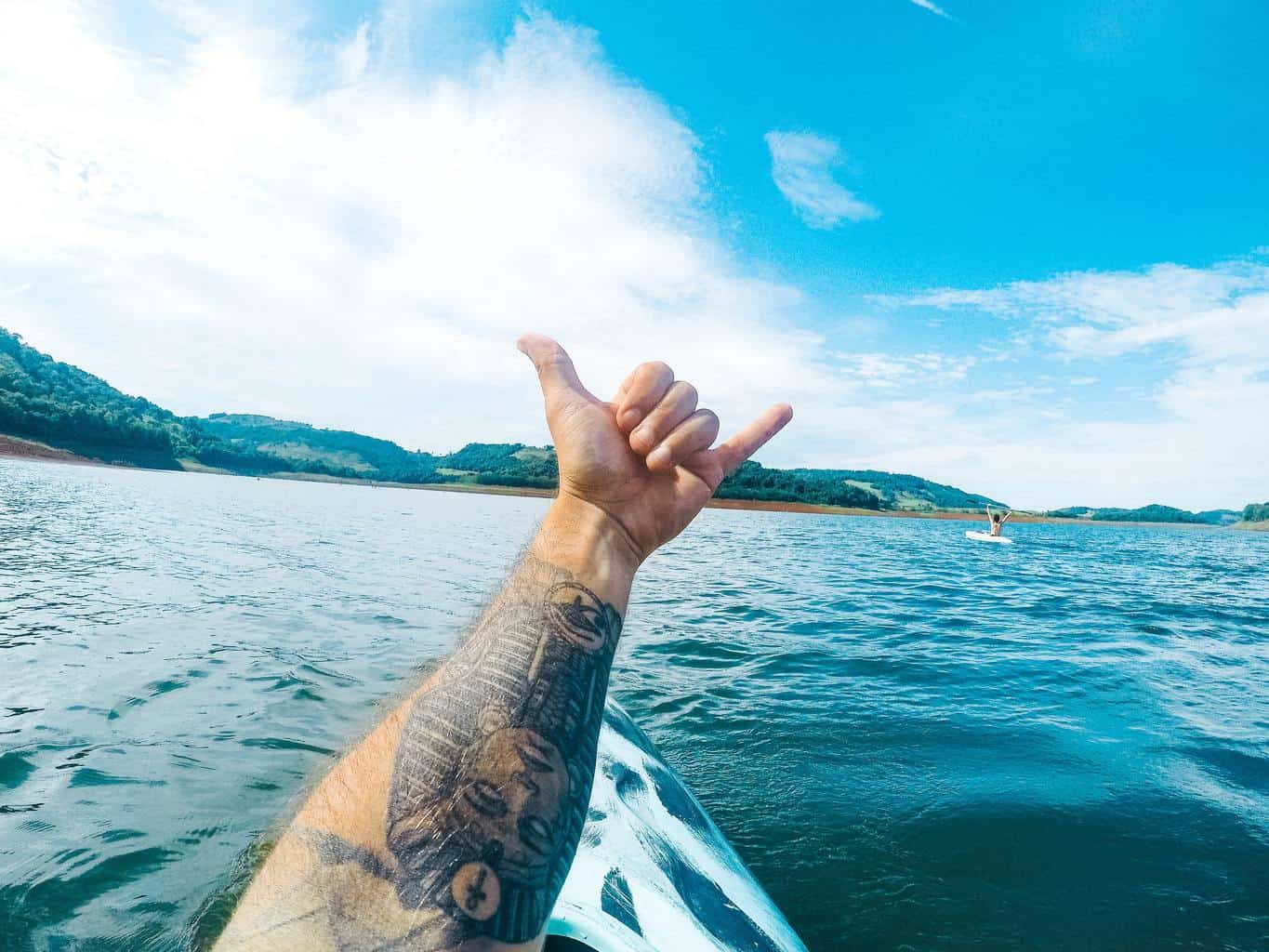
Can I Go Kayaking With a New Tattoo? (Facts You Should Know)
-

Can You Go Kayaking On Your Period? (+Practical Tips)
-
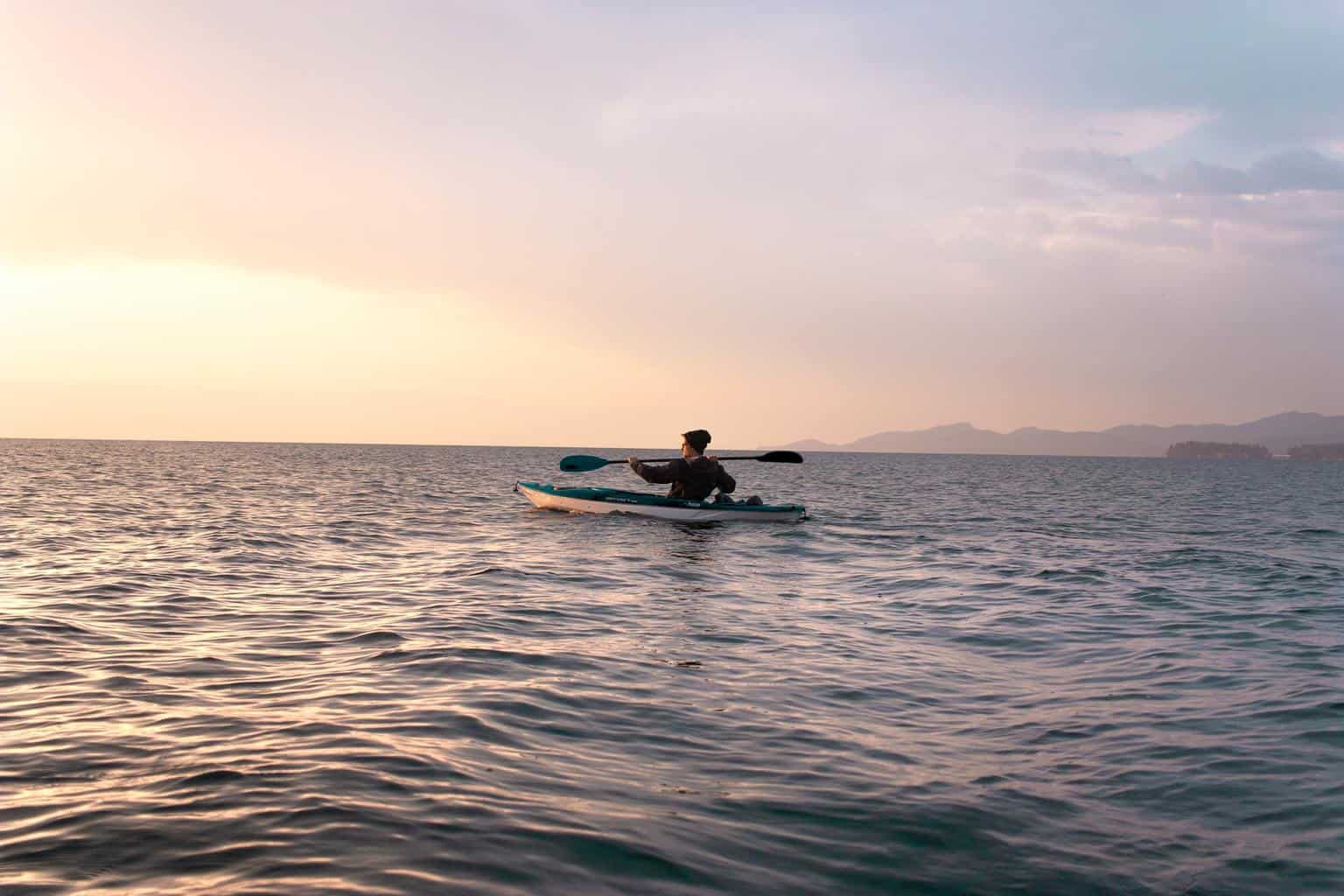
Can Kayaking Cause Hemorrhoids? (What Every Kayaker Should Know)
-
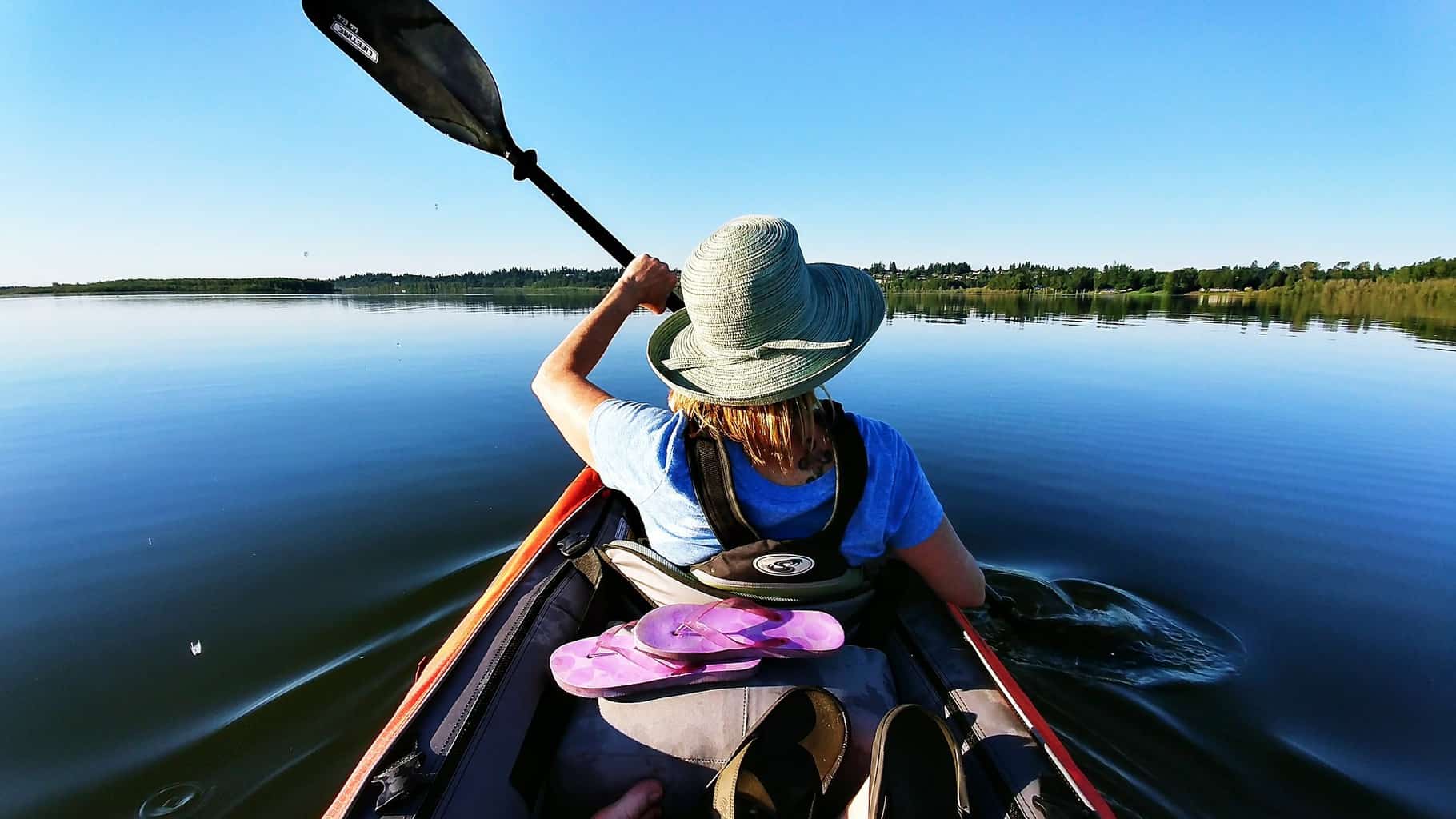
Can Kayaking Cause Tennis Elbow? (+8 Simple Tips to Avoid It)
-

Can Kayaking Cause Sciatica? (+7 Tips to Avoid It)











